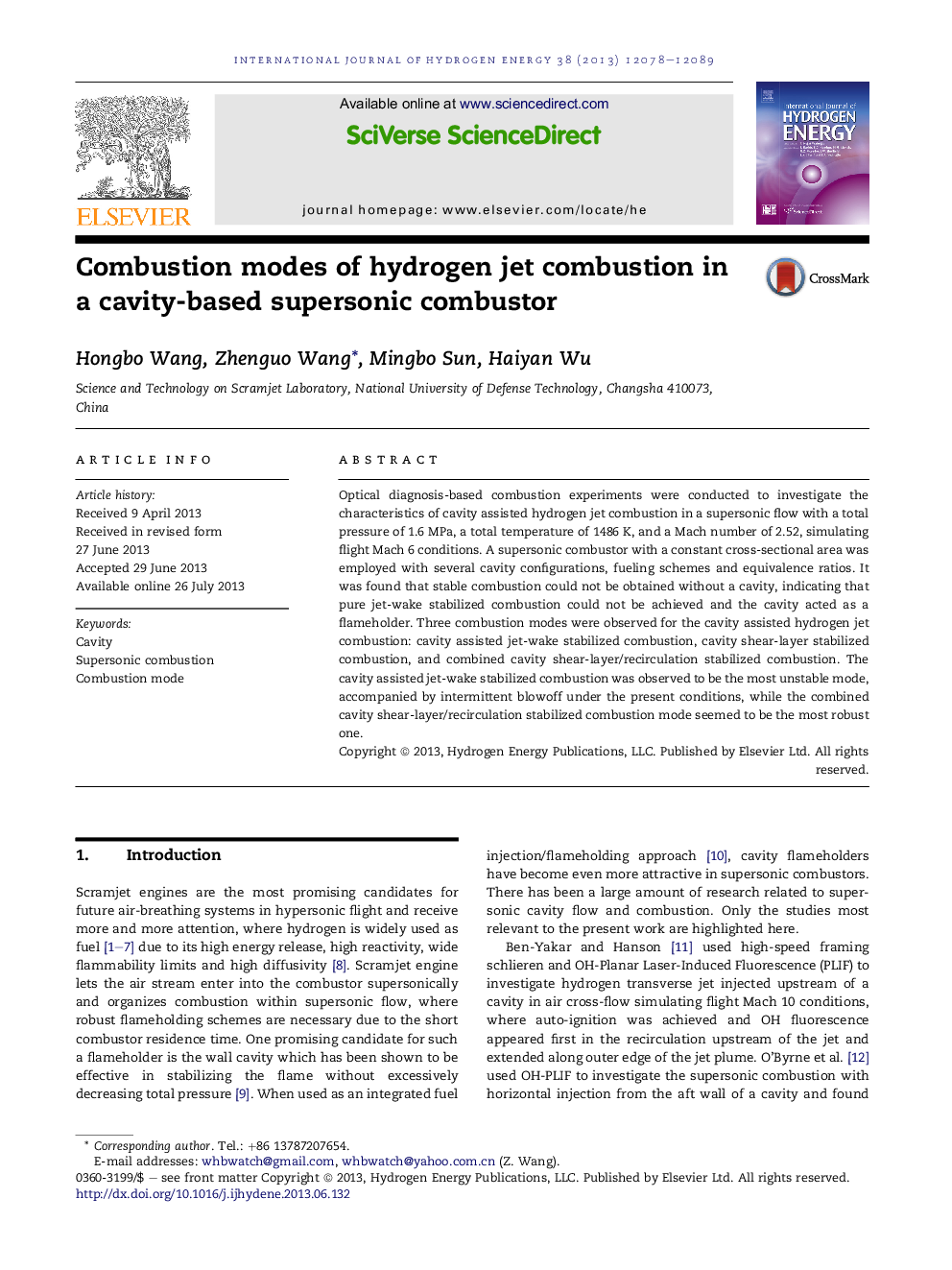| کد مقاله | کد نشریه | سال انتشار | مقاله انگلیسی | نسخه تمام متن |
|---|---|---|---|---|
| 1274927 | 1497518 | 2013 | 12 صفحه PDF | دانلود رایگان |

• Combustion modes in a supersonic combustor are investigated experimentally.
• Three combustion modes are observed for cavity assisted hydrogen jet combustion.
• Cavity assisted jet-wake stabilized combustion is the most unstable mode.
• Combined cavity shear-layer/recirculation stabilized combustion is the most robust.
Optical diagnosis-based combustion experiments were conducted to investigate the characteristics of cavity assisted hydrogen jet combustion in a supersonic flow with a total pressure of 1.6 MPa, a total temperature of 1486 K, and a Mach number of 2.52, simulating flight Mach 6 conditions. A supersonic combustor with a constant cross-sectional area was employed with several cavity configurations, fueling schemes and equivalence ratios. It was found that stable combustion could not be obtained without a cavity, indicating that pure jet-wake stabilized combustion could not be achieved and the cavity acted as a flameholder. Three combustion modes were observed for the cavity assisted hydrogen jet combustion: cavity assisted jet-wake stabilized combustion, cavity shear-layer stabilized combustion, and combined cavity shear-layer/recirculation stabilized combustion. The cavity assisted jet-wake stabilized combustion was observed to be the most unstable mode, accompanied by intermittent blowoff under the present conditions, while the combined cavity shear-layer/recirculation stabilized combustion mode seemed to be the most robust one.
Journal: International Journal of Hydrogen Energy - Volume 38, Issue 27, 10 September 2013, Pages 12078–12089